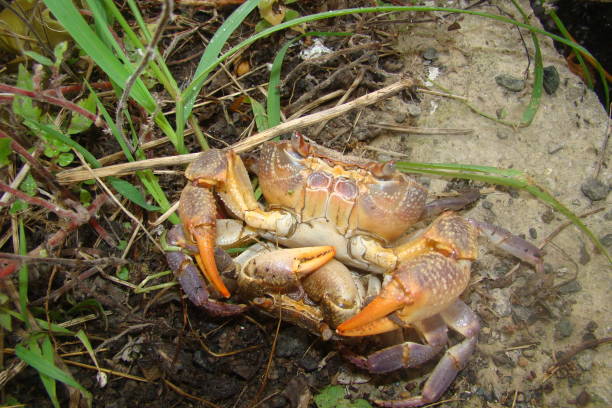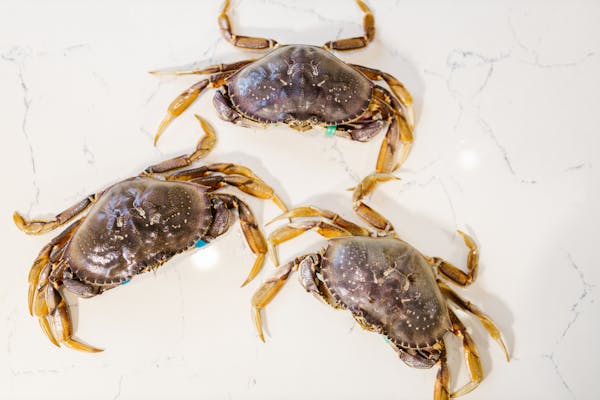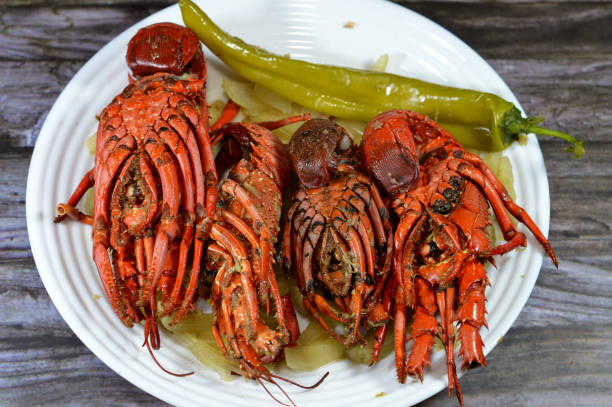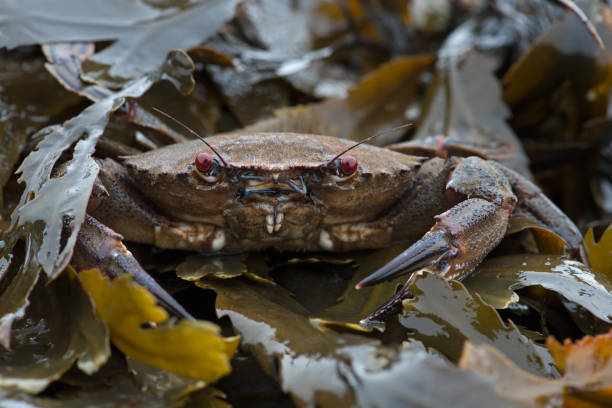- Basinikonda, Madanapalle, Annamayya (Dist), AP, Pin - 517325.
- imforupvtltd@gmail.com
About Crab Farming....
Crab Farming: An Overview
Crab Farming, also referred to as Crab Aquaculture or Crab Culture, is the practice of breeding, raising, and harvesting crabs for commercial use. It offers a profitable opportunity by supplying high-demand seafood to both local and international markets. With the right knowledge and management, crab farming can be a sustainable and rewarding business. Here’s a detailed overview to help you get started.



Key Aspects of Crab Farming:
1. Crab Species
Choosing the appropriate crab species is a key factor in successful crab farming:
Mud Crabs: Species like Scylla serrata and Scylla paramamosain are widely farmed for their rapid growth and strong market demand.
Blue Crabs: Callinectes sapidus is prized for its tender, flavorful meat and is commonly cultivated in specific regions.
Soft-Shell Crabs: Harvested during the molting phase, soft-shell crabs are considered a premium delicacy and fetch high prices in the market.
2. Farm Setup
Creating the right environment is vital for healthy crab growth and productivity:
Ponds or Tanks: Crabs can be reared in earthen ponds, concrete tanks, or more advanced systems like recirculating aquaculture systems (RAS), depending on the scale and resources.
Water Management: Consistently monitoring and maintaining ideal water quality—particularly salinity, temperature, and dissolved oxygen—is crucial for crab survival and development.
Fencing and Protection: Secure fencing and protective measures help prevent crab escape and shield them from natural predators such as birds and other animals.



3. Feeding and Nutrition
Providing the right diet is essential for the healthy growth and development of crabs:
Diet: Crabs are natural scavengers and thrive on a varied omnivorous diet. Suitable feed includes commercial crab pellets, fishmeal, mollusks, small crustaceans, and plant-based materials like vegetables and seaweed.
Feeding Practices: Feed should be offered consistently and in appropriate quantities. Regularly observe feeding behavior to ensure even distribution and prevent competition or food waste.
4. Breeding and Hatchery Management
A reliable breeding system supports continuous production and sustainability:
Broodstock Selection: Choose robust, disease-free, and mature crabs with favorable traits for reproduction.
Spawning and Larval Rearing: Create optimal conditions to trigger spawning, and raise the larvae in controlled hatchery systems with proper care and nutrition.
Nursery Rearing: After the larval stage, transfer juvenile crabs to nursery ponds or tanks where they can grow until they’re ready for stocking in grow-out systems.


5. Grow-Out and Management
Effective grow-out practices are essential for maximizing crab health and yield:
Stocking Density: Keep stocking levels within recommended limits to reduce stress, minimize aggression, and prevent cannibalism among crabs.
Water Quality Management: Continuously monitor salinity, temperature, pH, and oxygen levels, making necessary adjustments to ensure a healthy environment.
Health Management: Regularly inspect crabs for signs of illness, injury, or stress, and apply prompt treatment or preventive measures as needed.
6. Harvesting and Processing
Proper harvesting and processing help preserve the value and quality of your crab products:
Harvest Timing: Harvest crabs once they reach the ideal market size and weight, based on the species and customer preferences.
Processing Techniques: Use humane and efficient processing methods to reduce stress on the crabs and maintain freshness, taste, and overall product quality.



7. Economic Considerations
Crab farming can be a highly profitable enterprise when managed efficiently:
Market Research: Study local and international markets to gauge demand for various crab products, including live crabs, fresh crab meat, and specialty items like soft-shell crabs.
Cost Management: Monitor and control operational expenses—such as feed, labor, and infrastructure—to enhance profit margins.
Value Addition: Increase income potential by developing value-added products like crab cakes, crab soups, sauces, and seasonings that cater to niche and gourmet markets.
8. Environmental Impact
With responsible practices, crab farming can support environmental sustainability:
Sustainable Practices: Adopt eco-friendly methods such as proper effluent treatment, mangrove and coastal habitat preservation, and responsible site selection to minimize ecological harm.
Resource Efficiency: Improve efficiency by managing feed carefully to reduce waste, recycling water when possible, and integrating renewable energy or low-impact technologies into the farming system.




Encouragement for Crab Farming Investment
Dear Aspiring Crab Farmer,
Embarking on a crab farming venture—even on a small scale—offers exciting opportunities and strong potential for growth. Here’s why investing in crab aquaculture is a smart move:
- High Market Demand
Crabs are considered a premium seafood delicacy, with strong demand in both local and international markets.
With proper planning and care, crab farming can generate consistent income while also contributing to sustainable food production. - Versatility and Profitability
Crab farming provides flexibility with multiple product options, including live crabs, fresh crab meat, and specialty soft-shell crabs to suit a range of consumer preferences.
By developing value-added products like packaged crab meat, ready-to-cook dishes, or gourmet crab specialties, you can significantly boost profitability and expand your market reach.


- Sustainable and Eco-Friendly
When managed responsibly, crab farming can support environmental sustainability by enhancing marine biodiversity and maintaining ecosystem balance.
Adopting eco-conscious practices—such as water recycling, habitat conservation, and responsible waste management—helps minimize environmental impact and ensures the long-term success of your farm. - Community and Economic Impact
Crab farming has the potential to generate jobs and drive economic growth, especially in coastal and rural areas.
By investing in local aquaculture, you’re not only building a business—you’re strengthening community resilience, supporting local food systems, and contributing to food security and self-reliance.
Taking the First Steps:
- Start Small
Launch your crab farming venture on a manageable scale to gain hands-on experience and build confidence before scaling up operations. - Education and Training
Take advantage of training programs, workshops, online courses, and guidance from experienced crab farmers to deepen your expertise and improve your farming practices. - Market Research
Conduct in-depth market analysis to understand local demand, customer preferences, pricing trends, and competition. This insight will help you position your products effectively and make informed business decisions.
Remember, every thriving crab farming enterprise started with a vision and the determination to see it through. By staying committed to sustainable practices and applying smart, well-planned management strategies, you’re setting the foundation for a successful and rewarding journey in crab aquaculture.
Wishing you the best of luck in your Crab farming Venture!
Warm regards,
Valipi Reddy
C.E.O, IMFORU PVT. LTD.
